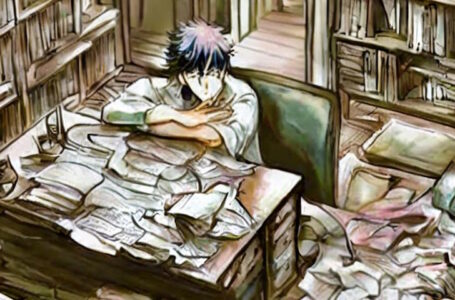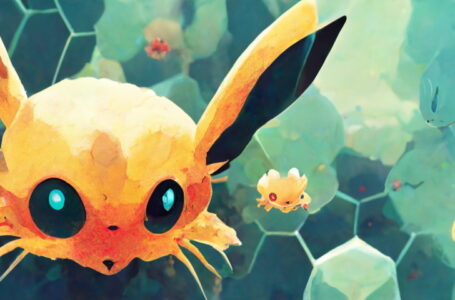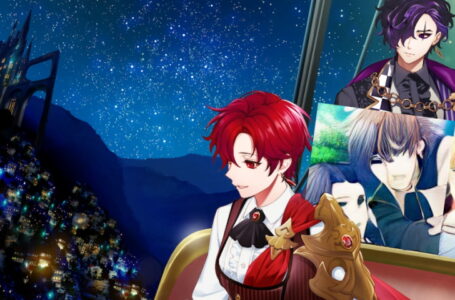PSA: if you want to play with AI art tools, don’t use them to disrespect artists’ work
The rise of the use of neural networks for quasi-creative purposes is an interesting and exciting field, as we’ve seen in quite a few areas recently. Right now, there are easily accessible tools online that allow you to use AI to create stories and pieces of visual art — and some researchers in the field are getting even more ambitious.
Trouble is, with any sort of interesting new technology like this, we inevitably get people behaving badly, pushing the boundaries of its acceptable use and then getting huffy when people say “no, that isn’t cool”. Presently, we’re seeing a spate of individuals taking the hard work of what we’ll refer to as “traditional artists” — i.e. people who actually draw their own stuff, either using physical materials or their computer — and feeding it into an AI to create their own variations.
Different AI art tools work in different ways. The popular MidJourney bot on Discord, for example, can make use of a submitted image as a basis for its output in order to better parse users’ text-based prompt; you can also feed its own output back into it as a means of refining and tweaking the end result. The header image for this article was made using MidJourney.
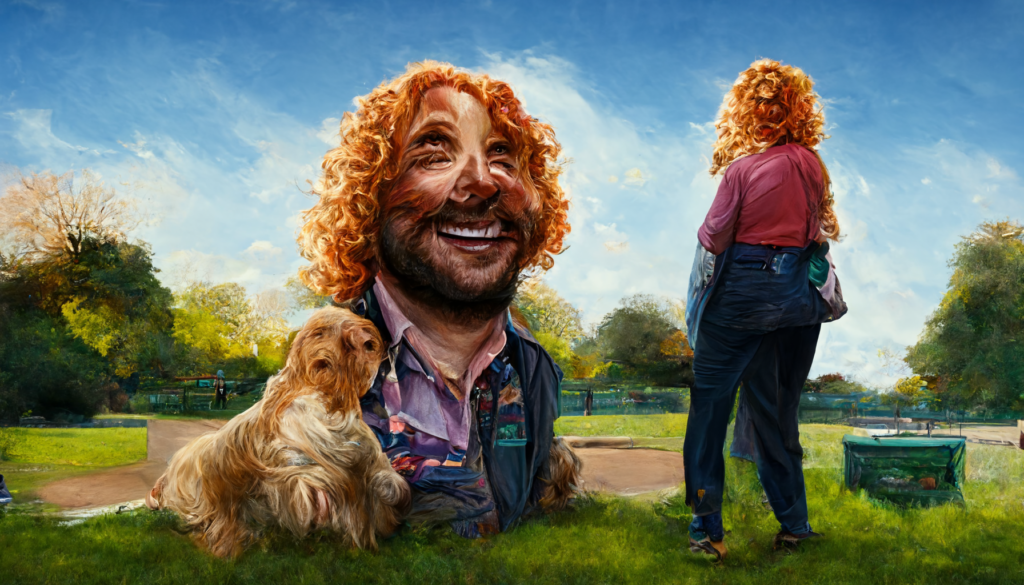
NovelAI Diffusion, the image generation component of the neural network-powered storytelling tool NovelAI, is the real problem right now. Since the focus of this particular AI art tool is on producing anime-style character art, people online have been feeding the work of various artists into NovelAI in order to produce their own images based on original characters drawn for commissions and suchlike — and then telling said artists (and, in some cases, commissioners) that this is what they’ve been doing.
You can hopefully see how this is a problem already, but let’s run over why it’s an issue just in case. The idea of “ooh, I like that, I’d like to see more pictures like that” seems like a sound use case for an AI tool like NovelAI — and if you’re attempting to do something like recreate a broad art style, it may well be beneficial to train the tool on the kind of output you’re looking for. For example, if you want to design a character in the ’90s anime Sailor Moon mould, it makes perfect sense to feed in some Sailor Moon images as source material.
This is, for the most part, fine, so long as you’re keeping it to yourself and, most importantly, not trying to make out that you created the art yourself. Being able to find the right combination of words and images to feed into a neural network is not the same as having the technical skills and creativity of a trained artist, however much some people might like you to believe otherwise.
Where things become a problem is when you go up to an artist and say “hey, I took this piece of art that someone paid you for, fed it into an AI bot and made a bunch of variations on it, aren’t I cool?” Because yes, that is absolutely a thing that happens.
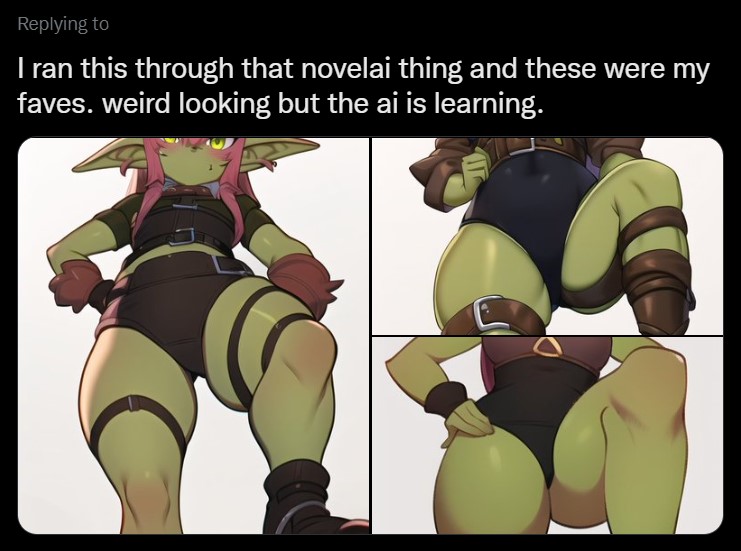
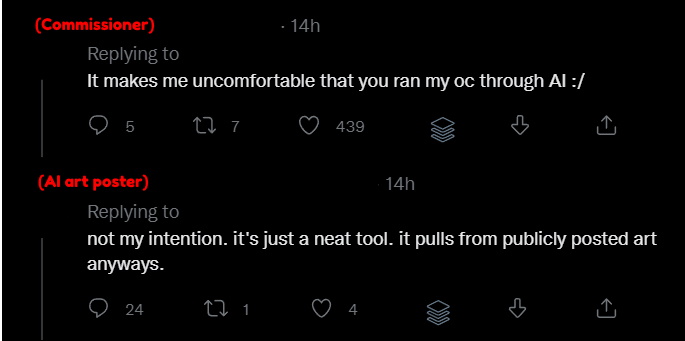
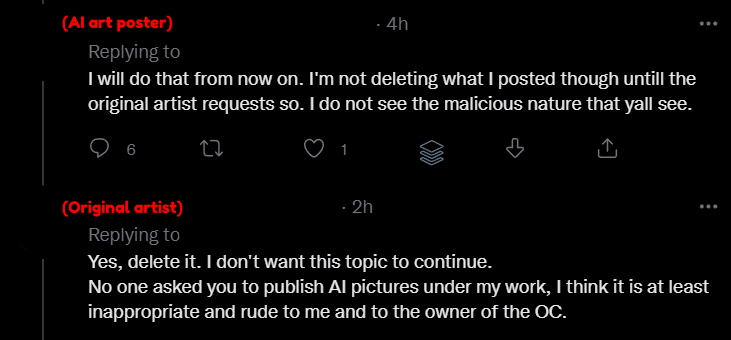
At heart, this is a similar issue to why online artists are so protective of their artwork, and so mistrustful of people reposting that artwork elsewhere. The artist worked hard on their original work, so for it to be posted somewhere else on the Internet, usually without credit — or, as in this case, used as the basis for something else — could potentially cause problems for their livelihood.
A piece of art used in this way doesn’t benefit the artist, help them find an audience or allow them to make contact with new clients. In fact, given some of the impressive results these AI solutions are able to put out, many artists are quite rightly concerned that potential commissioners will just feed a piece of artwork into NovelAI rather than paying a human being to draw the picture they want. And that’s a real issue, because without the human beings who drew the pictures those AI solutions were trained on in the first place, there is no AI solution.
Make no mistake, neural networks are not “computers being creative”. As we explored a little when talking about the researcher attempting to make a video game using a neural network, solutions like this are only able to spit out the results you have requested they provide given particular inputs. Without training that model on a variety of different inputs — in this case, the work of real artists — there is no model whatsoever. None of these AI bots are truly capable of producing art “from scratch”.
As someone in the Twitter thread screenshotted above said: “if you steal someone’s loaf of bread and use it to make sandwiches that’s still stealing. Theft is still theft, and now the person’s bread is [doing] something they never wanted it to be used for. Even if you’re not profiting off it, you’ve still taken all their effort to make your thing.”
By all means play with these tools and see what they’re capable of — they’re a cool new development, for sure, and it’s going to be interesting to see what neural networks are truly capable of in the years to come — but just use a bit of common sense when sharing your findings online.
Do not attempt to make out that you are some sort of genius artist because you found the right combination of words to tell a bot. Do not make use of artwork you don’t have the right to use to train the AI model — whether or not that art was “publicly posted”. And, for heaven’s sake, if you do do any of those things, don’t then go and get pissy with the artist and commissioner if they ask you politely to please not do that any more.
Got it? Good. Behave yourselves, for fuck’s sake.
Join The Discussion
Rice Digital Discord
Rice Digital Twitter
Rice Digital Facebook
Or write us a letter for the Rice Digital Friday Letters Page by clicking here!
Disclosure: Some links in this article may be affiliate links, which means we may earn a small commission if you make a purchase after clicking on them. This is at no additional cost to you and helps support Rice Digital!
- Letter from the Editor: passing the torch - June 30, 2023
- Super Woden GP 2 is looking promising - June 30, 2023
- Inti Creates is making a 32 bit-style Love Live action platformer - June 26, 2023




